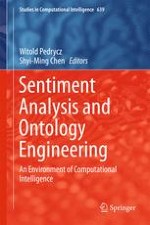2016 | OriginalPaper | Buchkapitel
Interpretability of Computational Models for Sentiment Analysis
verfasst von : Han Liu, Mihaela Cocea, Alexander Gegov
Erschienen in: Sentiment Analysis and Ontology Engineering
Aktivieren Sie unsere intelligente Suche, um passende Fachinhalte oder Patente zu finden.
Wählen Sie Textabschnitte aus um mit Künstlicher Intelligenz passenden Patente zu finden. powered by
Markieren Sie Textabschnitte, um KI-gestützt weitere passende Inhalte zu finden. powered by
